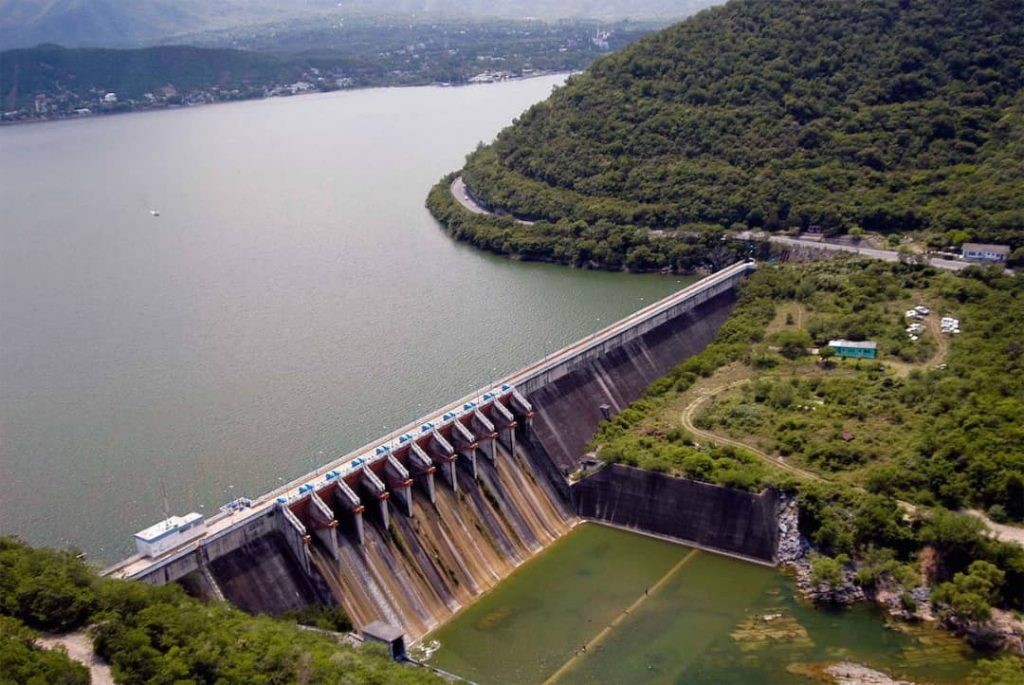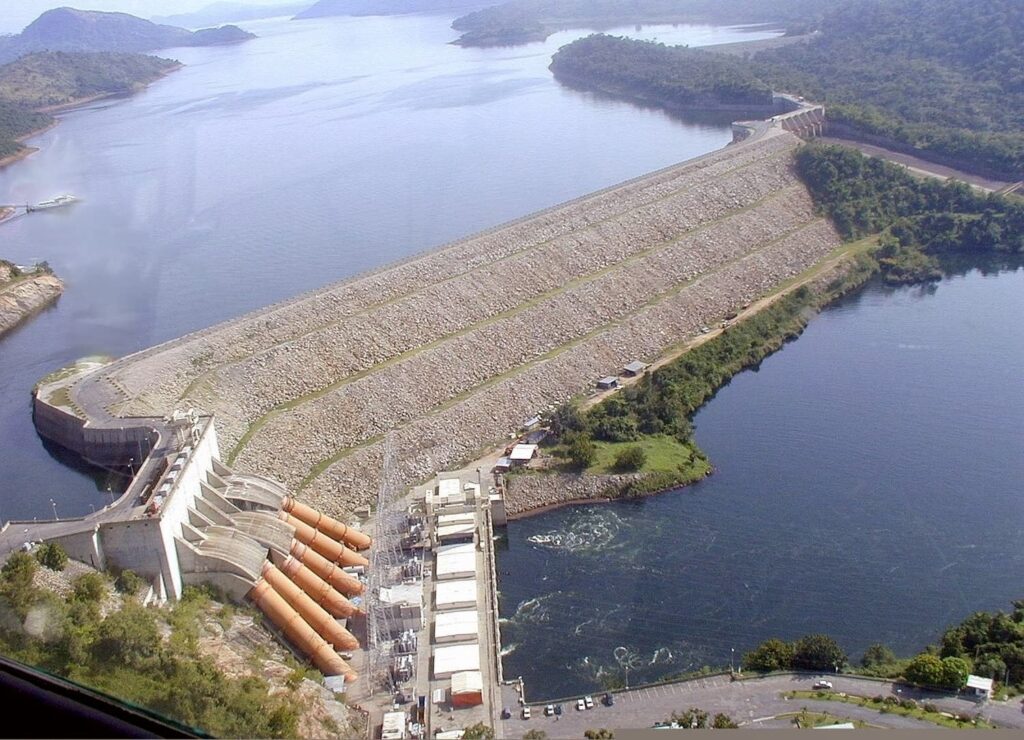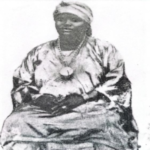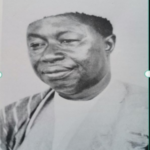

The Volta lake, as it is popularly known, was created by the construction of the Akosombo Dam over the River Volta in the mid-1960s. The filling of the lake necessitated the resettlement of nearly 80,000 people from some 740 villages. The reservoir starts from the Volta Basin, situated in the Central part of Ghana and extends over half the length of the country. It occupies more than 3.5% of Ghana’s entire land area, featuring 4,800 kilometers of shoreline.
The two primary inflows into the reservoir are the Black Volta and White Volta rivers which unite and make its way to the Atlantic Ocean.
The lake is navigable and provides a cheap route linking Ghana’s northern savanna with the coast. It also is a major fishing ground and provides irrigation water for farmland in the dry Accra Plains lying immediately below the dam site.
With an initial installed capacity of 912 megawatts, and subsequently increased to 1,020 megawatts after retrofitting, the dam’s hydroelectric power plant has helped in the industrial development of Ghana, and is currently considered the cheapest source of power in Ghana.
The Volta lake project was originally proposed by the geologist Albert Ernest Kitson in 1915 for harnessing the river to process local bauxite into aluminum. During World War II, the rising demand for aluminum attracted wider interest in the Gold Coast’s bauxite. Multinational companies and the British government became interested in creating an integrated aluminum industry in the Gold Coast, fitting with Britain’s colonial development initiatives.
When Osagyefo Dr Kwame Nkrumah’s government of the Convention People’s Party came to power in 1951, it moved the Volta project to the center of its modernization agenda.
In late 1961, after prolonged negotiations with Kaiser Aluminum, which would operate the future smelter, the World Bank, the United States, and the United Kingdom, Kwame Nkrumah finally secured the funding for the Project.
In the mid-1950s, about one thousand Tongu fishers operated in the area from the dam site to the heads of the future lake. They were part of a migratory economy that connected the Lower Volta with the upper parts of the river and its tributaries.
Dam construction began in 1961 before concrete steps toward resettlement were undertaken. The Volta River Authority launched a resettlement program that sought to provide housing in fifty-two townships with modern amenities for the displaced people. The outcome was different from what the planners had promised. Water pumps broke down, land clearing for settler agriculture remained insufficient, and irrigation projects were short lived. Unable to make a living, many residents abandoned the resettlement towns and the anticipated modernization did not happen.
LAKE VOLTA and the Construction of the Akosombo Dam – Ghana

The Volta lake, as it is popularly known, was created by the construction of the Akosombo Dam over the River Volta in the mid-1960s. The filling of the lake necessitated the resettlement of nearly 80,000 people from some 740 villages. The reservoir starts from the Volta Basin, situated in the Central part of Ghana and extends over half the length of the country. It occupies more than 3.5% of Ghana’s entire land area, featuring 4,800 kilometers of shoreline.
The two primary inflows into the reservoir are the Black Volta and White Volta rivers which unite and make its way to the Atlantic Ocean.
The lake is navigable and provides a cheap route linking Ghana’s northern savanna with the coast. It also is a major fishing ground and provides irrigation water for farmland in the dry Accra Plains lying immediately below the dam site.
With an initial installed capacity of 912 megawatts, and subsequently increased to 1,020 megawatts after retrofitting, the dam’s hydroelectric power plant has helped in the industrial development of Ghana, and is currently considered the cheapest source of power in Ghana.
The Volta lake project was originally proposed by the geologist Albert Ernest Kitson in 1915 for harnessing the river to process local bauxite into aluminum. During World War II, the rising demand for aluminum attracted wider interest in the Gold Coast’s bauxite. Multinational companies and the British government became interested in creating an integrated aluminum industry in the Gold Coast, fitting with Britain’s colonial development initiatives.
When Osagyefo Dr Kwame Nkrumah’s government of the Convention People’s Party came to power in 1951, it moved the Volta project to the center of its modernization agenda.
In late 1961, after prolonged negotiations with Kaiser Aluminum, which would operate the future smelter, the World Bank, the United States, and the United Kingdom, Kwame Nkrumah finally secured the funding for the Project.
In the mid-1950s, about one thousand Tongu fishers operated in the area from the dam site to the heads of the future lake. They were part of a migratory economy that connected the Lower Volta with the upper parts of the river and its tributaries.
Dam construction began in 1961 before concrete steps toward resettlement were undertaken. The Volta River Authority launched a resettlement program that sought to provide housing in fifty-two townships with modern amenities for the displaced people. The outcome was different from what the planners had promised. Water pumps broke down, land clearing for settler agriculture remained insufficient, and irrigation projects were short lived. Unable to make a living, many residents abandoned the resettlement towns and the anticipated modernization did not happen.


